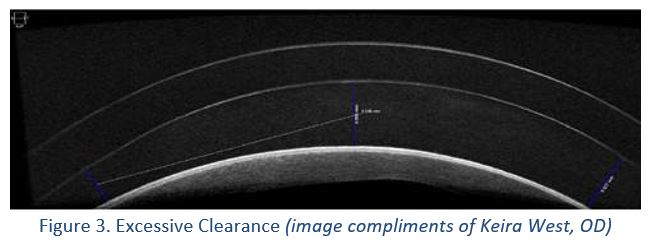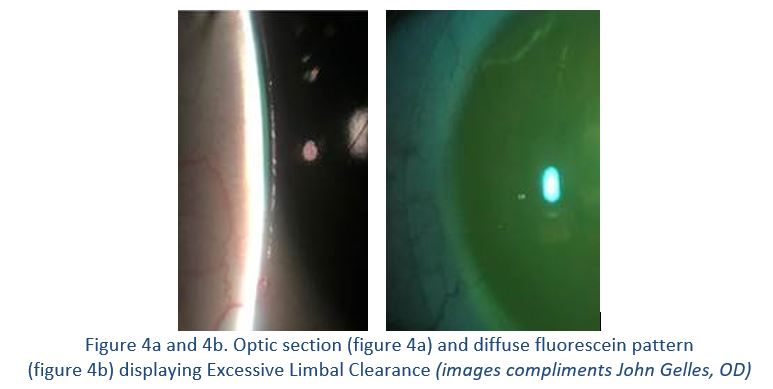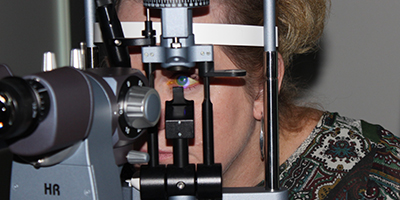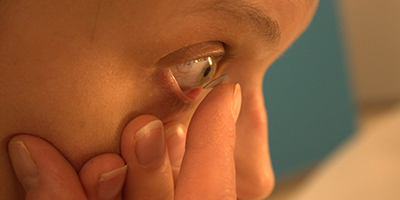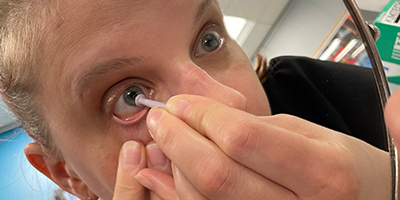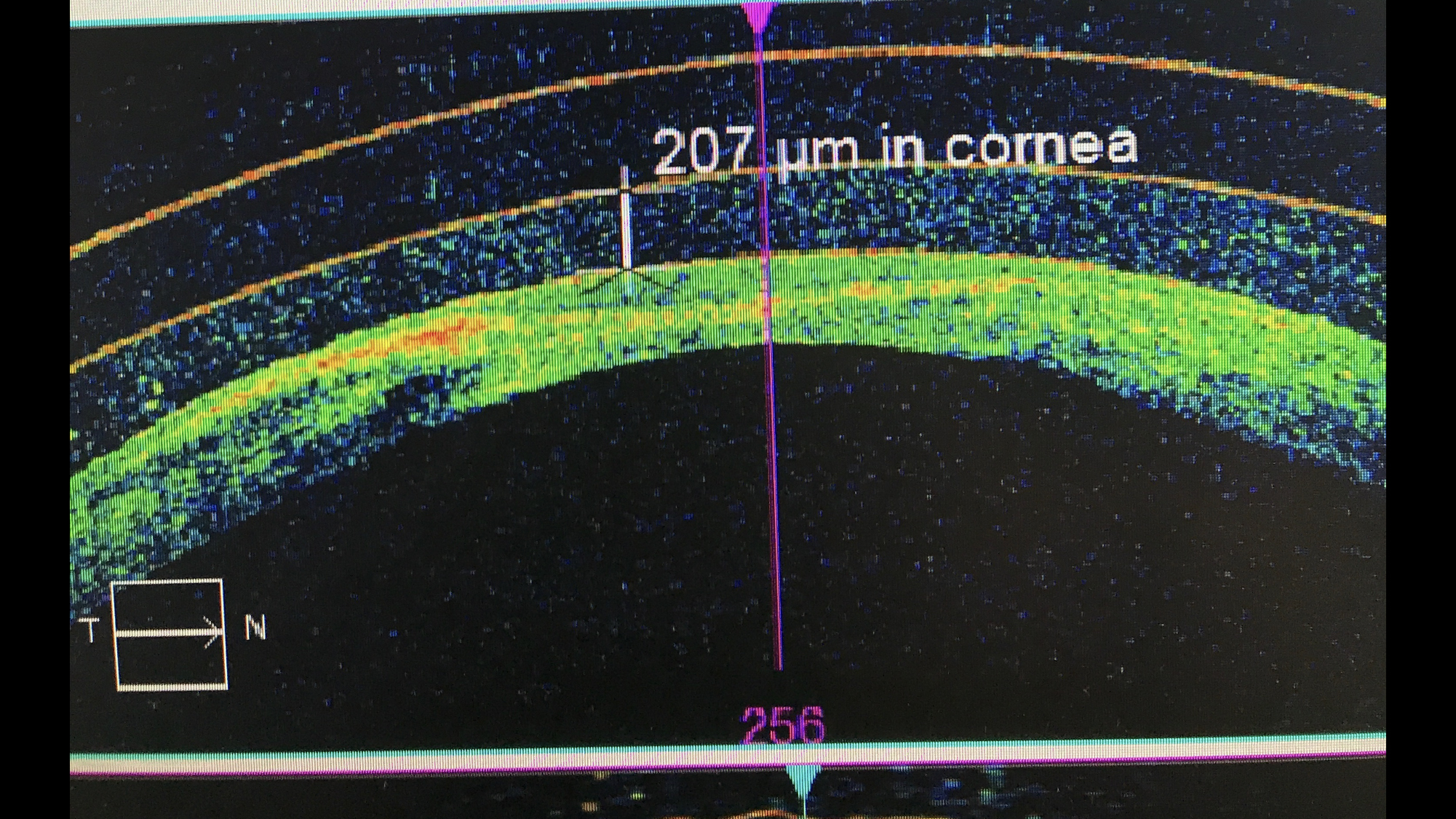
Back Surface Fogging
Back surface fogging is usually related to the lens fit. Adjusting the fit will usually decrease or eliminate back surface fogging issues. However, there are cases in which the only resolution to the debris buildup under the lens is to remove the lens, clean then re-apply.
Here are OCT images (figure 2) of fogging compared to a clear tear film. Note the difference between milky appearance of the tears under the lens in the top image versus the clarity of the tears in the bottom.
Some potential causes for back surface fogging are:
- Excessive central clearance. This OCT image (figure 3) shows an extreme case of overvault resulting in excessive central and limbal clearance. This creates debris being trapped under the lens and decreased oxygen to the cornea causing edema, or from a patient’s perspective “fogging.”
- Excessive Limbal Clearance. Figures 4a and 4b slit lamp images also show limbal clearance. Debris can more easily build up, adding to the fogging symptom and while sometimes leading to conjunctival prolapse, as well.
- Excessive edge lift. The lissamine green stain flowing under edge of the lens (figure 4a) and fluorescein pattern (figure 4b) shows debris to be pulled under the lens, creating a foggy appearance. This can be remedied with adding or increasing toric peripheries to the scleral lens.
These are just a few of the causes for back surface fogging. Contact your ABB consultation team to assist with fogging issues. A good rule of thumb is, if the fogging is on the front surface of the lens, it usually has an environmental cause. If the fogging occurs on the back surface, a fit change may be necessary.


